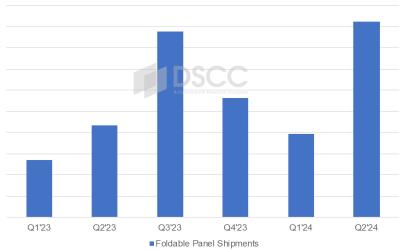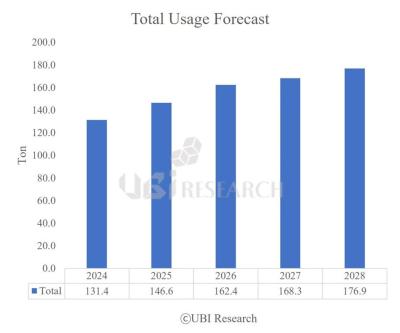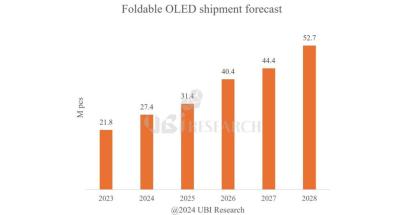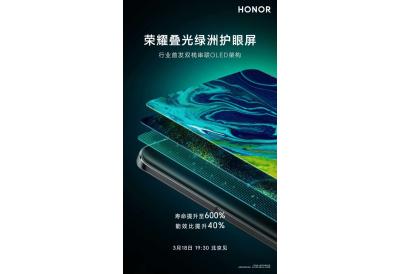OLED Smartphones - introduction and industry news - Page 4
LG Display gets approved to supply AMOLEDs for the iPhone 16 Pro Max before Samsung Display
Reports from Korea suggest that Apple approved LG Display as a supplier for its upcoming iPhone 16 Pro Max, the most advanced iPhone model to be released this year. Interestingly, LGD apparently got the approval before Samsung Display, Apple's main OLED supplier.
If true, this is the first time that Apple approves LGD first. This does not necessarily mean anything, but it does mean that the technology gap between Samsung and LGD is low, if present at all. Samsung has much higher production capacity compared to LGD, note. The two companies will likely produce panels for all four iPhone 16 models, and it is reported that BOE will supply some panels for the two standard iPhone 16 models.
DSCC sees 9.25 million foldable OLED panels shipped in Q2 2024, with Samsung returning to a dominant position
DSCC says that foldable OLED shipments increased 46% in the first quarter of 2024 compared to last year, to reach almost 4 million units.
BOE was leading the market in Q1 2024, with a market share of 48% (up from 43% in Q1 2023). The two leading foldable smartphone models were Huawei's Mate X5 and Pocket 2, using panels supplied by BOE. In fact Huawei had a market share of 55% in the foldable smartphone market.
Visionox shows its latest OLED and MicroLEDs at Displayweek 2024
During Displayweek 2024, Visionox demonstrated many OLED display technologies and panels, and also an interesting microLED prototypes (produced by its subsidiarity Vistar).
Visionox is in the final stages of development of its ViP maskless display production process, and the company showcased some nice ViP smartphone panel prototypes (the technology can be used for any panel size). ViP offers a high improvement in aperture ratio (69% up from 29%) which results in low power consumption and brightness (up to 4X according to Visionox), improved lifetime (up to 6X), improved PPI and more.
UBI: OLED emitter materials shipments to grow at a CAGR of 7.9% to reach $2.7 billion in 2028
UBI Research says that it expects the total shipments of OLED emitting materials to reach 131 tons in 2024. The market will grow to 177 tons by 2028, a CAGR of 7.9%. In terms of revenues, the market will grow from $2.4 billion in 2024 to $2.7 billion in 2028.
UBI says that demand for OLED displays is on the rise, fueled by increased adoption in entry-level phones and IT products.
Samsung Display established a dedicated research team to develop OLED products for Apple
According to reports from China, Samsung Display established a new R&D team dedicated to develop OLED products for Apple. The so-called "A Team" is part of the Giheung Research Institute in Yongin, Korea.
This is an interesting move by SDC. Apple is an extremely important customer for Samsung Display, of course, and up until recently SDC has been the leading supplier of OLED displays for Apple - winning the majority of orders for iPhone AMOLEDs. But now that Apple is starting to adopt OLEDs in IT products (starting with tablets) things are changing.
Japan Display to start producing eLeap laptop displays at its 6-Gen Mobara fab, ahead of schedule
In 2022, Japan Display (JDI) announced that it has developed a "historic breakthrough in display technology" - a new OLED deposition process which they refer to as eLEAP, that is said to be cost effective and can be used to create freeform OLEDs that are brighter, more efficient, and longer lasting compared to OLEDs produced using mask evaporation (FMM).
JDI is planning to establish a 8.7-Gen eLEAP fab in China, and it is also building a smaller-scale 6-Gen eLEAP production line in Mobara, Japan. The company announced that the 6-Gen Mobara fab is advancing ahead of schedule, and production of eLEAP panels will begin before the end of 2024. JDI developed 14" laptop panels that are three times brighter than other OLEDs (at 1,600 nits), and is also targeting smartwatches, smartphones and automotive displays. JDI is also looking into adopting a tandem structure, to increase brightness even further to 3,000 nits.
Apple develops a higher-efficiency LTPO backplane by adopting IGZO in the driving TFT
Apple was the first company to develop LTPO backplanes and it adopted this innovative and energy-efficient backplane technology back in 2018 in the Watch Series 4. LTPO combines Oxide-TFT and LTPS, by using the IGZO in some of the switching TFTs and LTPS in the remaining switching TFTs and all the driving TFTs. LTPO can reduce the power consumption by 5-15%, and enables variable refresh rate.
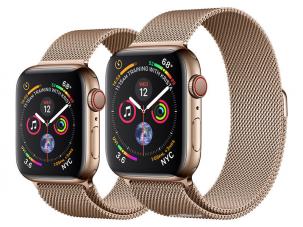
According to reports from Korea, Apple developed its 2nd-Gen LTPO backplane technology, that uses the IGZO in all the driving TFTs, and uses LTPS only in the remaining switching TFTs. This leads to higher efficiency compared to the first-generation LTPO backplane.
UBI: the foldable OLED market will grow to 52.7 million units in 2028, Samsung Display to remain the market leader
UBI Research released its latest foldable OLED shipments forecast, saying that it expects the market to grow from 27.4 million units in 2024 to 52.7 million 2028.
The market is dominated by Samsung Display, which shipped 13.4 million foldable OLEDs in 2023, and holds a 61% market. Samsung is followed by BOE (6.2 million, growing 3X from 2022), TCL CSOT (1.1 million) and Visionox (1.1 million). UBI expects Samsung Display to remain the clear leader in this market as it is the sole supplier to Samsung Electronics - and it is also expected that Samsung will be the exclusive supplier to Apple's future foldable iPhones.
Reports suggest BOE and perhaps Tianma to supply all the AMOLEDs for Apple's iPhone SE 4
A report from China suggests that Samsung will not produce any AMOLEDs for the upcoming Apple iPhone SE 4, as the Korean maker asked for around $30 per unit (6.1-inch) which was too high for Apple. Apple apparently wanted to pay only $25, and it is estimated that BOE will supply most of the units, with some orders perhaps going to Tianma.
According to reports, Samsung estimated that it will not be able to make a profit in this project and decided to stop the negotiations when Apple insisted on a low price.
BOE commercializes tandem smartphone AMOLED displays to improve lifetime and efficiency
According to reports, BOE has commercialized a new tandem OLED architecture, that enabled an improvement of 40% in power consumption and a 600% increase in display lifetime.
As you can see from the teaser poster above, Chinese smartphone maker Honor will release the first phone to adopt the new panel, the Honor Magic 6 Ultimate, next week on March 18th.
Pagination
- Previous page
- Page 4
- Next page
